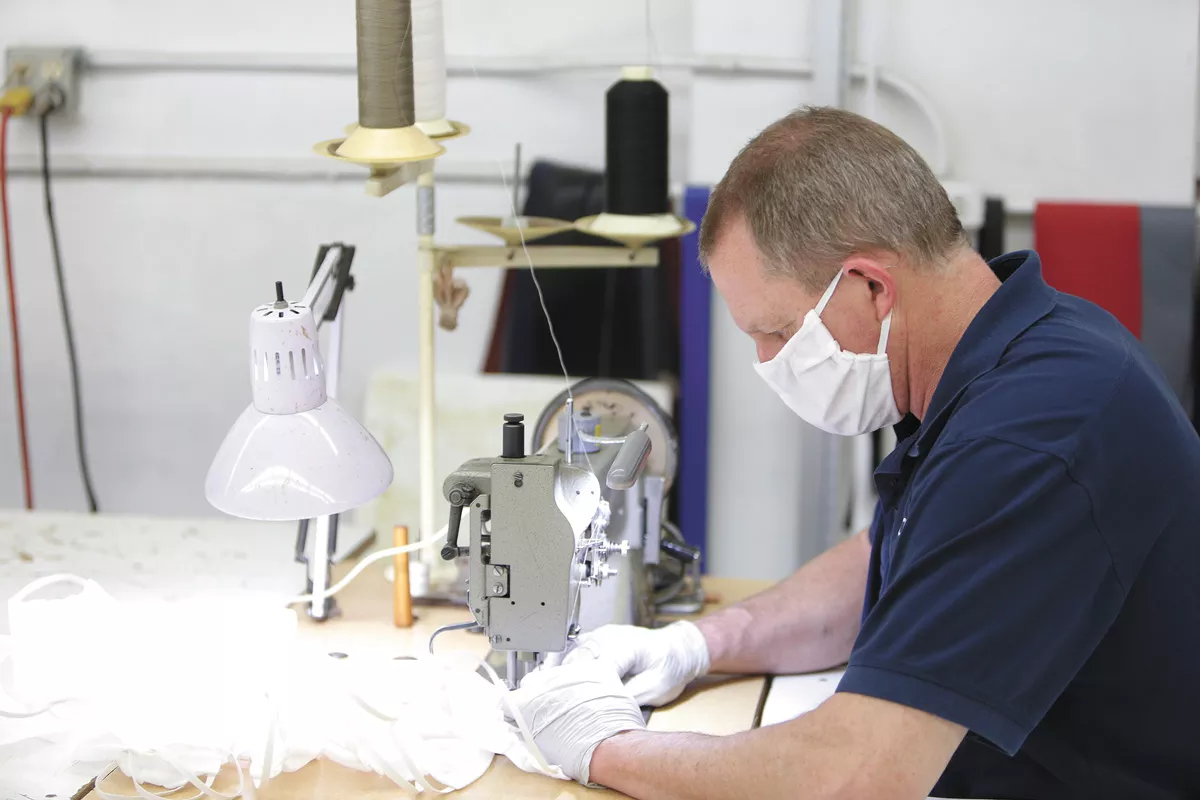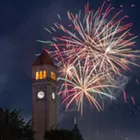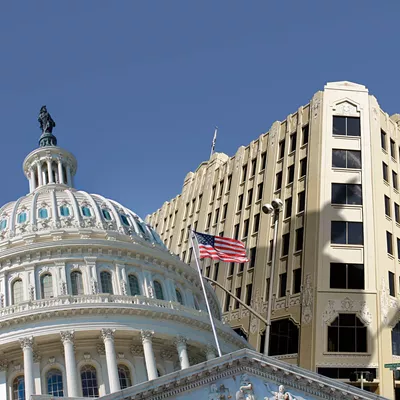A year ago, we knew there was a lot we didn't know about COVID-19.
But at the same time, there was a lot we thought we knew. We knew not to bother wearing cloth or surgical masks — that unless you were sick, they were ineffective. We knew that the viruses primarily spread on surfaces, and so we scrubbed our hands raw and coated the world in disinfectant. We knew that we needed to shut down playgrounds, parks and schools to get the virus under control.
But now we know that much of that was wrong.
ANYONE CAN WEAR THE MASK
In March 2020, Spokane Regional Health District's health officer Bob Lutz argued that wearing a surgical mask was just as ineffective as wearing a bandana and advised against wearing either, arguing that they created a false sense of security.Unless you were sick or a caregiver with a high-quality N95 mask, he told the Inlander, you're "better off washing your hands and practicing good cough etiquette than wearing a mask."
Initially, it seemed to be the expert consensus. The surgeon general tweeted for people to "STOP BUYING MASKS," arguing they were "NOT effective" for the general public. A Time magazine article headlined "Why People Aren't Listening to Experts About Face Masks" expressed exasperation that people kept insisting on wearing masks anyway.
By May, the recommendations had reversed: Wear a mask, Lutz and other doctors were saying.
Public health officials had been pooh-poohing masks in part to protect the limited supply for medical professionals. But they'd also underestimated a key trait of the virus: Many people were spreading COVID without ever experiencing a single symptom.
While cloth and surgical masks were only mildly protective for you, they were a whole lot better at preventing you from infecting others without realizing it. While coronavirus particles were tiny, they typically hitched rides on bigger droplets. Even your lousy $2 masks could reduce the spray of those droplets.
SURFACE TENSION
A year ago, Spokane primary care physician Gretchen LaSalle saw a viral threat lurking on every surface. Noting reports that COVID could last on hard surfaces for as long as 72 hours, she wrote a blog post last March that recommended ditching rings, eliminating hand towels, cleaning doorknobs daily, setting up an in-house "decontamination station," and putting up sticky-note reminders everywhere to constantly sanitize.It made sense back then, she says now.
"We knew this was a really deadly, deadly virus and didn't want to put anyone in harm's way until we had a better sense of a really good understanding of how it spreads," LaSalle says.
But by July the Atlantic reported that there had been only one plausible report of surface-to-surface transmission. The studies showing COVID lasting on surfaces for days had incorrectly assumed a wildly high concentration of the virus.
Meanwhile, a study of an office tower in South Korea showed that, despite around 1,000 workers and residents hitting the same elevator buttons, the big outbreak was largely limited to one part of a call center. Talking in a closed space was dangerous. Surfaces weren't.
Dr. David Pate, former president of Idaho's St. Luke's Health System, says that surface spread was technically possible, but rare.
"I would have to be infected, sitting in your office, sneeze all over your keyboard, and you immediately start typing while you're eating your sandwich," he says. "Something like that."
But that didn't mean we could breathe easy.
"Unfortunately, there was too little focus on airborne transmission," says Pate.
We learned that the virus can hang around in the air indoors as small aerosol particles, gliding on airstreams across entire rooms. A whole new set of factors — ventilation, room size — had to be taken into account. The indoors were more dangerous than we thought.
But in the outdoors, the virus quickly dissipated into the air and was hit by sunlight, one of the all-time best disinfectants. One study found that the odds of catching COVID inside was 20 times higher than outside.
The purely outdoor gatherings that public health professionals worried about — anti-mask rallies, Black Lives Matter protests and spring break beach bacchanalias — weren't the superspreader events we feared they'd be. Not only that, but the measures taken last spring to shut down parks and campgrounds may have been unnecessary.
"We probably didn't need to actually shut playgrounds down," Pate says.
AN OBJECT IN MOTION
The last year has been filled with such reversals.
- We shut down schools, but then learned that in-person schools were far safer than we had expected. Children had few symptoms and were unlikely to spread the virus to adults.
- Hospitals canceled elective surgeries, only to discover that, with the right protective equipment, they could have continued to operate safely.
- Early on, hospitals were desperately seeking more ventilators to save COVID patients' lives. The lack of ventilator supply was condemned as a massive state and federal policy failure. But it turned out ventilators actually made things worse for the patient's lungs and even sprayed COVID particles into the air.
"We learned that the more we could do to keep them off the ventilators, the better they would do," says Dr. Dan Getz, chief medical officer at Providence Sacred Heart Medical Center.
Normally, when journalists write about what "science" says — about climate change and fluoride, about genetically modified crops and vaccines — it's because it's a topic that has been studied for decades. But in this case, we got to watch science happen in real-time in all its messy, error-prone glory.
"Believing in science means you believe in the scientific process," LaSalle says. "You make a theory or a hypothesis, and then you test it. You test and retest and retest."
Getting things wrong is embedded in that process. It's just that we usually don't have so many lives riding on every mistake. ♦


























